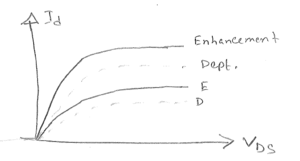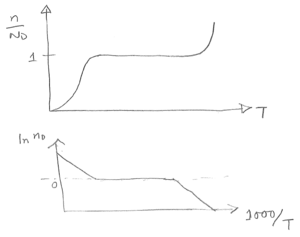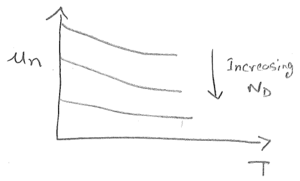(Created page with "Category:ECE Category:QE Category:MN Category:problem solving Category:Dynamics <center> <font size= 4> ECE_PhD_Qualifying_Exams|ECE Ph.D. Qualifying Ex...") |
|||
| Line 16: | Line 16: | ||
</font size> | </font size> | ||
| − | August | + | August 2009 |
</center> | </center> | ||
---- | ---- | ||
---- | ---- | ||
==Questions== | ==Questions== | ||
| − | All questions are in this [https://engineering.purdue.edu/ECE/Academics/Graduates/ | + | All questions are in this [https://engineering.purdue.edu/ECE/Academics/Graduates/Archived_QE_August_09/MN-2%20QE%2009.pdf link] |
=Solutions of all questions= | =Solutions of all questions= | ||
| − | 1) | + | 1) a) Zinc blend crystal. 8 atoms/unit cell. |
| − | + | b) <math>1.12 eV</math> | |
| − | + | c) <math>\sim10^4 V/cm (??) | |
| − | + | ||
| − | + | ||
| − | + | ||
| − | + | ||
| − | + | ||
| − | + | ||
| − | + | ||
| − | + | ||
| − | + | ||
| − | + | ||
| − | + | ||
| − | + | ||
| − | + | ||
| − | + | ||
| − | + | ||
| − | + | ||
</math> | </math> | ||
| + | |||
| + | d) Chemistry exam question. (some other language) ?? | ||
------------------------------------------------------------------------------------ | ------------------------------------------------------------------------------------ | ||
2) | 2) | ||
| + | a) | ||
| + | <math> | ||
| + | n = N_Ce^{(E_F-E_C)/kT} | ||
| + | p = N_Ve^{(E_V-E_F)/kT} | ||
| + | </math> | ||
| + | |||
| + | b) If <math>E_F = E_i</math> then <math>n = n_i, p = n_i</math> | ||
<math> | <math> | ||
\begin{align*} | \begin{align*} | ||
| − | + | n_i &= N_Ce^{(E_i-E_C)/kT} =n\\ | |
| − | + | n_i &= N_Ve^{(E_V-E_i)/kT} =p\\ | |
| − | \ | + | \therefore n_p&=n_i^2=N_CN_Ve^{-E_g/kT} |
| − | + | ||
\end{align*} | \end{align*} | ||
</math> | </math> | ||
| + | c) | ||
| + | [[Image:MN2_2009_1.png|Alt text|300x300px]] | ||
------------------------------------------------------------------------------------ | ------------------------------------------------------------------------------------ | ||
| − | 3) | + | 3) a) |
| − | + | ||
<math> | <math> | ||
| − | \ | + | \begin{align*} |
| + | p &=\frac{1}{q\mu_nN_D}\\ | ||
| + | \implies\mu_n&=\frac{1}{qp\cdot N_D}\sim 1.5\times10^3cm^2/V\cdot s \text{ (chk)} | ||
| + | \end{align*} | ||
</math> | </math> | ||
| − | + | b) | |
<math> | <math> | ||
| − | \ | + | \mu_p=\frac{1}{qp\cdot N_A}\sim 0.5\times10^3cm^2/V\cdot s \text{ (chk)} |
| − | + | </math> | |
| − | + | <math>\mu_p<\mu_n</math> as <math>p_p>p_n</math> | |
| − | + | because <math>m_p^*>m_n^*</math> | |
| − | + | ||
| − | + | c) Ionized impurity | |
| − | + | ||
| − | + | ||
| − | + | ||
| − | + | ||
<math> | <math> | ||
| − | \ | + | \tau_n\sim\frac{T^{3/2}}{N_D} |
| − | + | </math> | |
| + | Photon scattering | ||
<math> | <math> | ||
| − | + | \tau_n\sim T^{-3/2} | |
| − | + | ||
| − | + | ||
| − | + | ||
| − | + | ||
</math> | </math> | ||
| + | <math> | ||
| + | \mu_n = \frac{q\tau_n}{m^*}\sim\tau_n | ||
| + | </math> | ||
| + | [[Image:MN2_2009_2.png|Alt text|300x300px]] | ||
------------------------------------------------------------------------------------ | ------------------------------------------------------------------------------------ | ||
| − | 4) | + | 4) a) ?? |
| − | <math> | + | |
| − | + | b) [[Image:MN2_2009_3.png|Alt text|300x300px]] | |
| + | Depletion mode device is ON without applied <math>V_{GS}</math>. So, <math>V_{GS}</math> is lower for Dep. mode device. Hence low current. | ||
| + | |||
| + | c) <math> | ||
| + | I_D = \frac{1}{2}\mu_nC_{ox}\frac{W}{L}(V_{GS}-V_{th})^2 | ||
| + | </math> | ||
| + | <math> | ||
| + | g_m = \frac{\partial I_D}{\partial V_{GS}} = \mu_nC_{ox}\frac{W}{L}(V_{GS}-V_{th}) | ||
</math> | </math> | ||
| + | If W=L then; <math>\mu_n=\frac{g_m}{C_{ox}(V_{GS}-V_{th})}</math> | ||
------------------------------------------------------------------------------------ | ------------------------------------------------------------------------------------ | ||
Revision as of 22:19, 5 August 2017
MICROELECTRONICS and NANOTECHNOLOGY (MN)
Question 2: Junction Devices
August 2009
Questions
All questions are in this link
Solutions of all questions
1) a) Zinc blend crystal. 8 atoms/unit cell. b) $ 1.12 eV $
c) $ \sim10^4 V/cm (??) $
d) Chemistry exam question. (some other language) ??
------------------------------------------------------------------------------------
2) a) $ n = N_Ce^{(E_F-E_C)/kT} p = N_Ve^{(E_V-E_F)/kT} $
b) If $ E_F = E_i $ then $ n = n_i, p = n_i $ $ \begin{align*} n_i &= N_Ce^{(E_i-E_C)/kT} =n\\ n_i &= N_Ve^{(E_V-E_i)/kT} =p\\ \therefore n_p&=n_i^2=N_CN_Ve^{-E_g/kT} \end{align*} $
------------------------------------------------------------------------------------
3) a)
$ \begin{align*} p &=\frac{1}{q\mu_nN_D}\\ \implies\mu_n&=\frac{1}{qp\cdot N_D}\sim 1.5\times10^3cm^2/V\cdot s \text{ (chk)} \end{align*} $
b)
$ \mu_p=\frac{1}{qp\cdot N_A}\sim 0.5\times10^3cm^2/V\cdot s \text{ (chk)} $ $ \mu_p<\mu_n $ as $ p_p>p_n $
because $ m_p^*>m_n^* $
c) Ionized impurity
$ \tau_n\sim\frac{T^{3/2}}{N_D} $
Photon scattering
$ \tau_n\sim T^{-3/2} $ $ \mu_n = \frac{q\tau_n}{m^*}\sim\tau_n $
------------------------------------------------------------------------------------ 4) a) ??
b)  Depletion mode device is ON without applied $ V_{GS} $. So, $ V_{GS} $ is lower for Dep. mode device. Hence low current.
Depletion mode device is ON without applied $ V_{GS} $. So, $ V_{GS} $ is lower for Dep. mode device. Hence low current.
c) $ I_D = \frac{1}{2}\mu_nC_{ox}\frac{W}{L}(V_{GS}-V_{th})^2 $ $ g_m = \frac{\partial I_D}{\partial V_{GS}} = \mu_nC_{ox}\frac{W}{L}(V_{GS}-V_{th}) $ If W=L then; $ \mu_n=\frac{g_m}{C_{ox}(V_{GS}-V_{th})} $
------------------------------------------------------------------------------------



